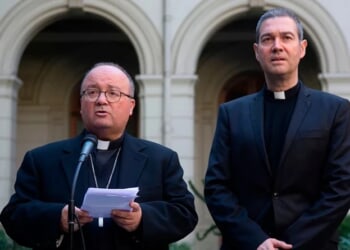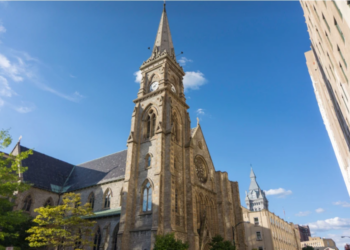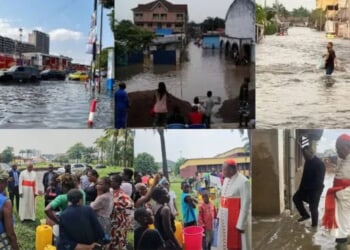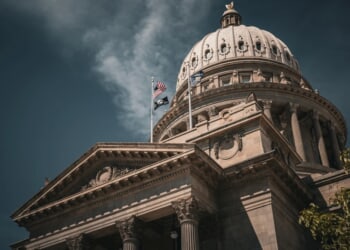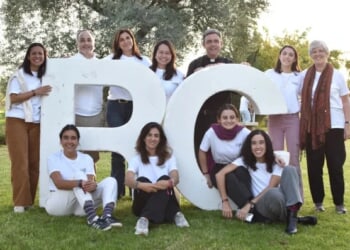CNA Staff, Apr 15, 2025 /
07:00 am
Catholic advocates in Australia are warning lawmakers there of the risk that pornography exposure poses to children, including the threat of normalizing forms of violent sexual behavior among young people.
The Parliament of New South Wales recently began public hearings for its inquiry into the “impacts of harmful pornography on mental, emotional, and physical health.”
The Parliament’s Standing Committee on Social Issues says the inquiry will particularly focus on “age of first exposure to pornography and impacts of early exposure to pornography” as well as porn’s “impacts on body image” and “the impact of exposure to violent and/or misogynistic pornography on children, teenagers, and young adults.”
Advocates have been warning for years of the detrimental effects of pornography, including the harm it does to young people who consume it. Ubiquitous internet access and universal smartphone access has allowed porn to proliferate over the past several decades and has given children significant access to it.
Among the New South Wales Parliament’s aims is assessing the “psychological and physiological impacts” of so-called “harmful porn” use on “at-risk groups such as children and young people” as well as possible restrictions on porn use.
‘All forms of pornography are harmful’
Several Catholic groups and advocates have weighed in on the parliamentary inquiry. Among them are Deirdre Little, the national bioethics convener of the Catholic Women’s League Australia.
Little spoke at last month’s public hearing on the inquiry. During the event she challenged the inquiry’s classification of “harmful porn.”
“As Catholic women, we regard all forms of pornography as harmful and that so-called standard nonviolent pornography is not harmless,” she told the committee.
An evidentiary submission from the Catholic Women’s League cited data showing that children exposed to pornography prior to 12 years old “are statistically more likely to sexually assault their peers” as well as a correlation “between sexually abusive children and their access to the internet.”
The porn crisis goes beyond its directly harmful effects on children, Little told the panel.
“Children are more likely to experience a broken home and parental disharmony in a home where there is repeated adult exposure to even nonviolent standard pornography,” she said.
Porn consumption “is associated with reduced valuation of marriage, regarding extramarital affairs as normal, associated with a mounting use to addiction, associated with escalation to more deviant pornography, the trivialisation of rape and behavioral aggression,” she continued.
A majority of divorce lawyers, she said, say that internet porn “plays a role in divorce.”
Also speaking at the hearing was Catherine Garrett-Jones, the executive director of the Council of Catholic School Parents.
In its own submission, the council cited a recent survey of Australian teachers in which they “expressed despair with the rapid rise of sexualized behaviors which they attributed to early exposure to pornography.”
(Story continues below)
Subscribe to our daily newsletter
Parents have reportedly expressed concern to teachers about “the ease with which pornography can be accessed, the lack of parental engagement in managing access to social media as well as the inability of many parents to use technology to block unwanted content being accessed.”
At last month’s hearing Garrett-Jones told the committee that parents have expressed “support for further government regulation around access” to porn.
“I think the request for that comes from parents’ own feelings of inadequacy around how to manage social media,” she said. “It’s growing at a pace faster than they can understand.
“Parents and carers feel helpless, in many ways, to actually do the regulating themselves,” she continued. “They’re unsure of how their kids are accessing some of this material and need support.”
The parents council in its filing further cited links between porn usage and poor body image as well as the “relationship between pornography and violence against women.”
The parents council called for education campaigns to help “provide users of technology or anyone supervising children who use technology with an understanding of how to mitigate the risks” associated with internet usage.
The Catholic Women’s League, meanwhile, said parents should “accept responsibility for the purity and protection of children,” including strict monitoring of technology and a familiarity with sexual content blocks and filters.
Technology platforms, meanwhile, “should be answerable for their role in exposure of children to pornography and for internet grooming of children.”
At the recent hearing Deirdre Little compared the current understanding of pornography to that of cigarette smoking in decades past.
“We already saw … with cigarette smoking, how it went on for over a generation, two generations, before there was a warning, ‘Well, hang on. This could actually be injurious to your health,’” she noted.
“At the moment, because there is this acceptance that standard nonviolent pornography is harmless — that there’s harmful pornography and there’s good pornography — [that] tends to normalize it,” she pointed out.
And “we know that normalizing pornography leads to an escalation in use, and that also leads to an escalation towards other deviancy and violent forms,” she added.




